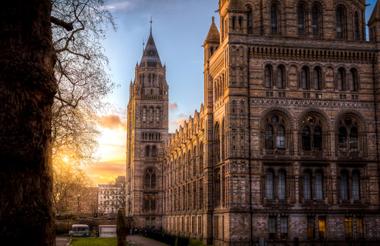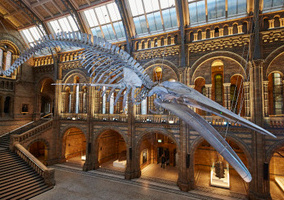The National History Museum’s income increased by £19.6m in 2022-23 due to “the strong recovery in visitor numbers”, according to recently filed accounts.
Accounts for the year ended 31 March 2023 show that the charity had a total income of £117m last year, compared with £97.4m the previous year.
The charity said that it “experienced a successful recovery in a lockdown-free year as the UK’s most visited indoor attraction in 2022 for the second year in a row”, with its number of visitors doubling to 5.3 million.
Meanwhile, expenditure increased by £15.1m due to an increase in activity across the organisation and inflationary pressures.
Strong post-pandemic recovery
The accounts say that the charity’s financial position for 2022-23 “has been supported by the strong recovery in visitor numbers to 5.3 million (2022: 2.5 million), comparable to pre-pandemic levels” following the final easing of Covid-19 restrictions.
“This contributed to an overall growth in total income to £117m (2022: £97.4m). This includes Covid-19 support funding of £3.1m from the Government (2022: £9m). Non-government income increased by £14.5m to £51.1m (2022: £36.6m),” the accounts read.
As part of the funding agreement with the Department for Culture, Media and Sport, grant-in-aid funding increased from £60.7m in 2022 to £65.9m in 2023 and is set to increase every year thereafter until 2025.
The accounts say that “following an increase in activity across the organisation to near pre-pandemic levels”, coupled with inflationary pressures, total expenditure rose from £89.5m to £104.6m.
During the year under review, the charity employed an average of 911 full-time equivalent staff compared with 877 in 2022.
The salary of Douglas Gurr, the museum director, was between £180,000 and £185,000, up from £175,000-£180,000 last year.
‘We strive to become a more diverse organisation’
The Natural History Museum said that it “continues to strive to become a more equal, diverse and inclusive organisation and has been gathering and evaluating data on its workforce to help do this”.
The accounts reveal that the charity increased its number of staff from Black, Asian and minority backgrounds from 13.7% to 15% and its number of employees self-defining as disabled from 7.5% to 9.1%.
Employees who “identified as lesbian, gay, bisexual, or other sexuality” represented 10.4% of the workforce in 2023, up from 8.8% in 2022.
“Our vision is of a future where both people and the planet thrive. Diversity is one of our core values and we strive to build a workplace where everyone feels a sense of belonging. All new staff who join us learn about the importance of diversity and inclusion to the Museum and how to contribute to creating an inclusive environment,” the accounts say.
“We know we have more to do and we have developed a strategy and action plan to enable us to meet our diversity and inclusion aims. We are committed to ensuring that everyone who works at the Museum feels they can thrive and feel valued and respected.”
Related articles












